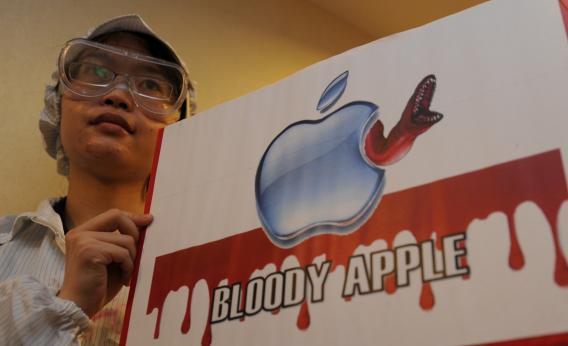Public radio’s popular This American Life episode* about abuses in the Foxconn factories that make Apple products has been retracted on the grounds of the “significant fabrications” it apparently contained. That’s an embarassing moment for TAL, but even if the coverage had been fully accurate—or even in the cases where reporting on Apple’s supply chain is spotless—I still think there’s a deeply problematic solipsism in most of this reporting. Apple makes lots of stuff that lots of Americans own and therefore it’s possible to make people feel a kind of psychic chain of guilt when they hear about bad conditions in the factories building the components. But this is a bit like the South By Southwest human hotspots problem, what Apple stands accused of is complicity in the misery of Chinese workers but its real crime often seems to be exposing our delicate western sensibilities to the misery.
You don’t read articles about working conditions in factories making socks destined for export to Kazakhstan, and you don’t read articles about working conditions on the rice farms that people eagerly leave to go toil in the sock factory. That rice and those socks are invisible to us and so too are the workers. What we need to see and hear about are bad conditions wherever they may be, not just the ones that provide the appealing news hook. When you read something bad about a Foxconn factory and then see that thousands of people line up for the chance of a job at one of them, that really ought to make you wonder. What were those guys doing the day before they decided to stand in line? How did that look? If you want to understand the depths of poverty that exist in the world, you can’t just look under the streetlamp.
* Correction: I originally described This American Life as an NPR show, when it’s in fact a Public Radio International production.
